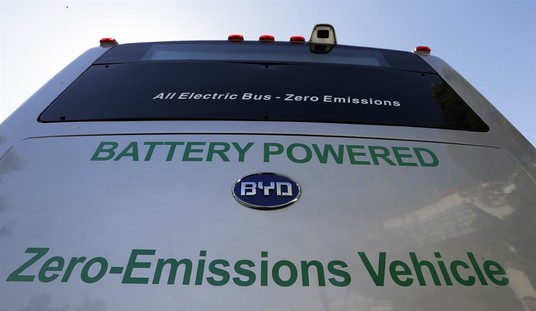Gulp. We knew the Q2 number would be bad, but this is perhaps at the outer marker of expectations. Economic output dropped almost ten percent in real terms in Q2, which translates to an annualized loss of 32.9% for the quarter. That loss follows on a -5% annualized GDP result in Q1.
That is one big crater from which to emerge, and some may have hoped that better-than-expected results from May and June on some indicators might have mitigated the main damage in April. Unfortunately, that doesn’t appear to be the case:
Real gross domestic product (GDP) decreased at an annual rate of 32.9 percent in the second quarter of 2020 (table 1), according to the “advance” estimate released by the Bureau of Economic Analysis. In the first quarter, real GDP decreased 5.0 percent.
The GDP estimate released today is based on source data that are incomplete or subject to further revision by the source agency (see “Source Data for the Advance Estimate” on page 2). The “second” estimate for the second quarter, based on more complete data, will be released on August 27, 2020.
It likely surprises no one that personal consumption expenditures (PCE), or consumer spending, dropped like a rock in Q2. It fell 34.6%, a function of both shutting down retail locations and the loss of millions of jobs. Private domestic investment fell even further, 49%, as businesses reeled from COVID-19 restrictions.
There is almost no part of the US economy that even did relatively status-quo business. Durable goods purchases only dropped 1.4%, which might mean that consumers still kept up with major issues while eschewing any other spending. Federal government spending skyrocketed 17.4%, with non-defense rising 39.7%, but that was a function of all the relief spending that was intended to buffer the impacts from the shutdowns.
Our trade business got hammered the hardest, and in both directions. Exports fell 64.1% while imports fell only slightly less at 53.4%. That’s likely due to shutdowns in other countries and their own massive reduction in spending and production, but also partly due to our trade war with China. The results in 2019 on trade weren’t exactly booming either, but these trade numbers will really put pressure on the Trump administration to support exporters in particular in the short term.
On top of that bad news, the number of initial weekly jobless claims went up again slightly, for the second week in a row. In a more worrisome trend, the number of those receiving benefits jumped up by nearly 900,000 after a month-long trend that had gone sharply in the other direction:
In the week ending July 25, the advance figure for seasonally adjusted initial claims was 1,434,000, an increase of 12,000 from the previous week’s revised level. The previous week’s level was revised up by 6,000 from 1,416,000 to 1,422,000. The 4-week moving average was 1,368,500, an increase of 6,500 from the previous week’s revised average. The previous week’s average was revised up by 1,750 from 1,360,250 to 1,362,000.
The advance seasonally adjusted insured unemployment rate was 11.6 percent for the week ending July 18, an increase of 0.5 percentage point from the previous week’s unrevised rate. The advance number for seasonally adjusted insured unemployment during the week ending July 18 was 17,018,000, an increase of 867,000 from the previous week’s revised level. The previous week’s level was revised down by 46,000 from 16,197,000 to 16,151,000. The 4-week moving average was 17,058,250, a decrease of 435,500 from the previous week’s revised average. The previous week’s average was revised down by 11,500 from 17,505,250 to 17,493,750.
Emphasis mine. This has particular implications for the debate taking place right now in Washington DC over the Phase 4 relief package. Neither party can afford to have a mass movement back into those jobless programs, which means they need to find a way to support businesses and protect payrolls. The PPP program and some others are well positioned to keep the aid flowing, but it will take action from Congress to keep those coffers replenished. This report might be even more meaningful than the Q2 GDP numbers in pushing members on both sides of the aisle to a faster resolution of the current standoff.








